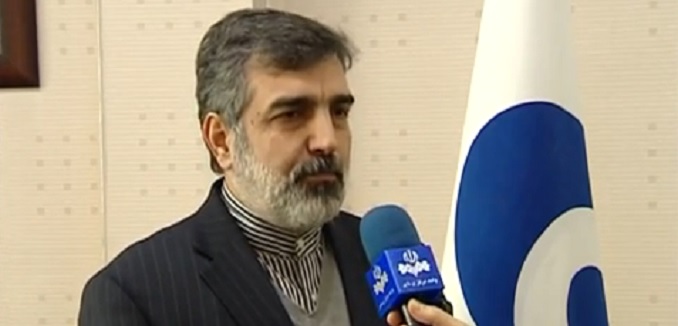Reuters reported on Monday that a delegation from the International Atomic Energy Agency (IAEA) – the U.N.’s atomic watchdog – would be holding talks until Tuesday on among other things “how the U.N. agency would monitor a planned heavy-water reactor near the town of Arak,” which the West has long demanded Tehran either fully dismantle or at a minimum downgrade to a light water version.
The discovery in early 2013 that Iran had resumed progress on the Arak facility, which contains a heavy water production facility and the reactor, was described at the time as the Islamic republic’s “Plan B” for acquiring a nuclear weapon. The current IR-40 reactor would allow Iran to produce at least one bomb’s worth of plutonium per year.
Top Western diplomats and analysts, including those [PDF] linked to the U.S. government and the IAEA, have for years rejected Iranian pretexts for operating any heavy water reactor:
If there is a pause, Iran should discuss with the P5+1 the conversion of the IR-40 reactor to a
significantly more proliferation-resistant light water research reactor. Olli Heinonen, former Deputy
Director General at the IAEA and now a senior fellow at the Belfer Center for Science and
International Affairs at Harvard University, has made this practical proposal.17 He says that such a
reactor could use Iran’s current stock of 3.5 percent low enriched uranium as fuel, an approach which
has been demonstrated to be feasible. The spent fuel containing plutonium could be sent overseas for
storage, reducing concerns about domestic separation of plutonium.
Inadequate interim concessions regarding Arak were reportedly what prevented the P5+1 global powers and Iran from coming to a interim agreement in mid-November, in a session before the current interim Joint Plan of Action (JPA) agreement was agreed upon.
Iranian officials have been publicly unequivocal in repeatedly drawing red lines against downgrading the Arak reactor, and Behrouz Kamalvandi – a spokesman for the Atomic Energy Organization of Iran (AEOI) – reiterated the stance last Friday. Kamalvandi went on to declare that Iran would refuse to “shut down or change any facility.”
Some Western analysts and journalists have nonetheless found grounds for optimism in Iranian declarations that the P5+1 was coming around to a counter-offer, under which Tehran would keep the Arak reactor unmodified but would reduce the amount of power it produced by half or even three-fourths. AEOI head Ali Akbar Salehi in recent days doubled down on that position:
Ali Akbar Salehi, who heads the Atomic Energy Organization of Iran, said on Saturday that Iran is on the brink of reaching an agreement regarding the operation of the heavy water plant. “The issue of heavy water reactor … has been virtually resolved,” state television quoted Salehi as saying. “Iran has offered a proposal to … redesign the heart of the Arak facility and these six countries have agreed to that.”
Iranian state television quoted Salehi as saying that Iran has proposed to redesign Arak to produce one-fifth of the plutonium initially planned for it. He said that will eliminate concerns the West has that Iran could use the plutonium produced at Arak to build a nuclear weapon.
Israeli security officials have rejected the proposal, with Intelligence and Strategic Affairs Minister Yuval Steinitz suggesting that there’s little to be gained by enabling the Iranians to “create one [bomb] every two years” rather than “a bomb every year.” More pointedly, once the reactor is activated there would be no functional way for it to be destroyed militarily, and nothing to stop the Iranians from simply reverting to processes that produce higher yields of plutonium.
[Photo: PressTV Videos / YouTube]




